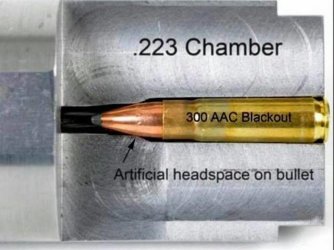quigley257
Well-Known Member
Perhaps a patch or other remnant of the previous nights cleaning . It would amaze some people just how very little liquid it takes(bore solvent, oil, or rain drops) to radically drive up pressures. Just a guess...I have a yet explained near "catastrophic" overpressure situation that occurred around 1987 with a Remington 700 Heavy Barrel Varmint in .223 Rem…….that certainly ""was not" welding!
I was called, the day before the "EVENT by a friend suggesting that we go "Prairie Dogging" the next day. I cleaned my Remington for tomorrow's shooting.
As I had nothing loaded, I loaded up 50 rounds for the following day.
We arrived at a little "Prairie Poodle" village, where my friend and his wife took out a few. When it was my turn, with a squeeze of the trigger…..all Hell broke loose!
I received a pretty good jolt to the shoulder, remember this is a .223 Rem. fired in a heavy rifle! Smoke erupted from every opening in the action! When I attempted to open the bolt …..it wouldn't budge.
To say I was surprised and bewildered is an understatement.
I went home, pulled and weighed the remaining 49 cartridges and found nothing wrong.
I took the rifle to a 'smith that hammered (glad I didn't witness it) the bolt open. The extractor was destroyed…..but no other damage was found. The .223 Rem case was now a "belted " case.
After all of these years, my only explanation is……after cleaning the rifle, I leaned it in the corner of my basement reloading area and a bug/wasp/something built a nest in the barrel
I still see that as unlikely though…..it was less than 24 hrs. prior to shooting, and in SW Wyoming there just aren't a lot of insects that would plug a hole that quickly for a nest!
The floor is now open for comments!memtb
Last edited:


